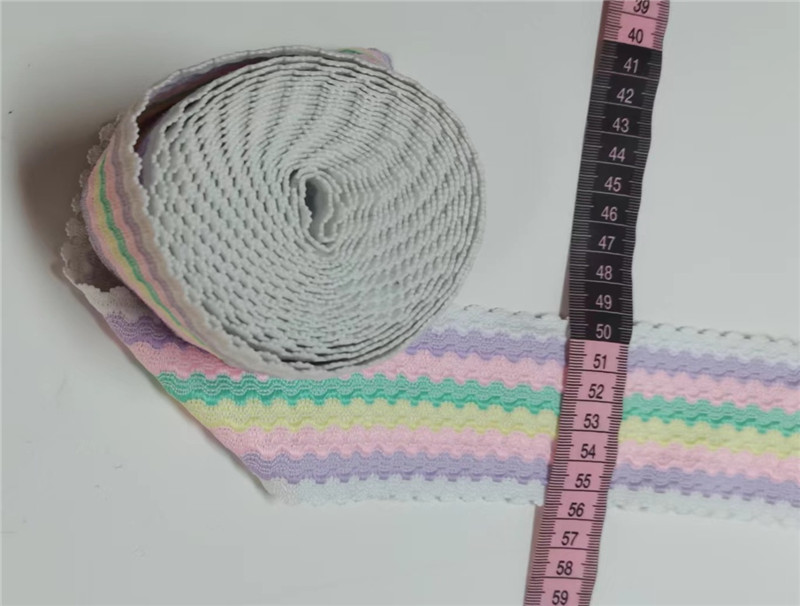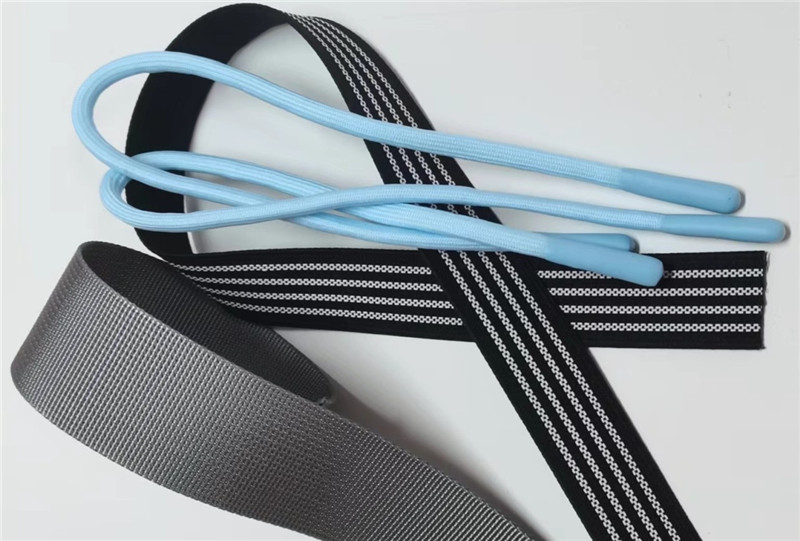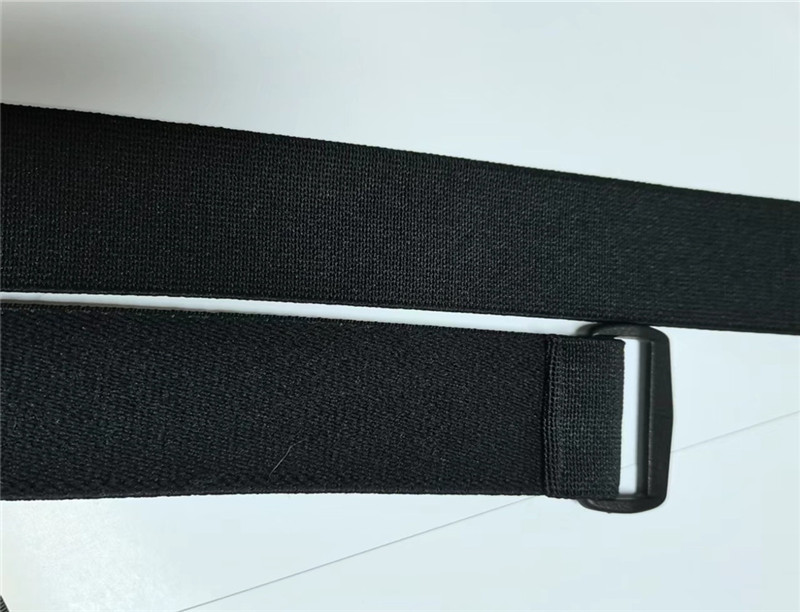The common calculation formulas of textile are divided into two kinds: the formula of fixed length system and the formula of fixed weight system.
1. Calculation formula of fixed length system:
(1), Denier (D):D=g/L*9000, where g is the weight of the silk thread (g),L is the length of the silk thread (m)
(2), Tex (number) [Tex (H)] : Tex = g/L of * 1000 g for yarn (or silk) weight (g), L the length of the yarn (or silk) (m)
(3) dtex: dtex=g/L*10000, where g is the weight of the silk thread (g),L is the length of the silk thread (m)
2. Calculation formula of fixed weight system:
(1) Metric count (N):N=L/G, where G is the weight of the yarn (or silk) in grams and L is the length of the yarn (or silk) in meters
(2) British count (S):S=L/(G*840), where G is the weight of silk thread (pound),L is the length of silk thread (yard)

Conversion formula of textile unit selection:
(1) Conversion formula of metric count (N) and Denier (D) :D=9000/N
(2) Conversion formula of English count (S) and Denier (D) :D=5315/S
(3) The conversion formula of dtex and tex is 1tex=10dtex
(4) tex and Denier (D) conversion formula :tex=D/9
(5) The conversion formula of tex and English count (S) :tex=K/S K value: pure cotton yarn K=583.1 pure chemical fiber K=590.5 polyester cotton yarn K=587.6 cotton viscose yarn (75:25)K=584.8 cotton yarn (50:50)K=587.0
(6) Conversion formula between tex and metric number (N) :tex=1000/N
(7) Conversion formula of dtex and Denier :dtex=10D/9
(8) Conversion formula of dtex and imperial count (S) : dtex=10K/S K value: pure cotton yarn K=583.1 pure chemical fiber K=590.5 polyester cotton yarn K=587.6 cotton viscose yarn (75:25)K=584.8 dimensional cotton yarn (50:50)K=587.0
(9) Conversion formula between dtex and metric count (N) :dtex=10000/N
(10) The conversion formula between metric centimeter (cm) and British inch (inch) is :1inch=2.54cm
(11) The conversion formula of metric meters (M) and British yards (yd) :1 yard =0.9144 meters
(12) Conversion formula of gram weight of square meter (g/m2) and m/m of satin :1m/m=4.3056g/m2
(13) The weight of the silk and the formula for converting pounds: pounds (lb) = silk weight per meter (g/m) * 0.9144 (m/yd) * 50 (yd) / 453.6 (g/yd)
Detection method:
1. feel visual method: This method is suitable for textile raw materials with loose fiber state.
(1), cotton fiber than ramie fiber and other hemp process fibers, wool fibers are short and fine, often accompanied by a variety of impurities and defects.
(2) Hemp fiber feel rough and hard.
(3) Wool fibers are curly and elastic.
(4) Silk is a filament, long and fine, with special luster.
(5) In chemical fibers, only viscose fibers have a large difference in dry and wet strength.
(6) Spandex is very elastic and can stretch to more than five times its length at room temperature.
2. microscope observation method: according to the fiber longitudinal plane, section morphological characteristics to identify the fiber.
(1), cotton fiber: cross section shape: round waist, middle waist; Longitudinal shape: flat ribbon, with natural twists.
(2), hemp (ramie, flax, jute) fiber: cross section shape: waist round or polygonal, with a central cavity; Longitudinal shape: there are transverse nodes, vertical stripes.
(3) Wool fiber: cross-section shape: round or nearly round, some have wool pith; Longitudinal morphology: scaly surface.
(4) Rabbit hair fiber: cross-section shape: dumbbell type, hairy pulp; Longitudinal morphology: scaly surface.
(5) Mulberry silk fiber: cross-section shape: irregular triangle; Longitudinal shape: smooth and straight, longitudinal stripe.
(6) Ordinary viscose fiber: cross section shape: sawtooth, leather core structure; Longitudinal morphology: longitudinal grooves.
(7), rich and strong fiber: cross section shape: less tooth shape, or round, oval; Longitudinal morphology: smooth surface.
(8), acetate fiber: cross section shape: three leaf shape or irregular sawtooth shape; Longitudinal morphology: The surface has longitudinal stripes.
(9), acrylic fiber: cross section shape: round, dumbbell shape or leaf; Longitudinal morphology: smooth or striated surface.
(10), chlorylon fiber: cross section shape: close to circular; Longitudinal morphology: smooth surface.
(11) Spandex fiber: cross section shape: irregular shape, round, potato shape; Longitudinal morphology: dark surface, not clear bone stripes.
(12) Polyester, nylon, polypropylene fiber: cross section shape: round or shaped; Longitudinal morphology: smooth.
(13), Vinylon fiber: cross-section shape: waist round, leather core structure; Longitudinal morphology: 1~2 grooves.
3, density gradient method: according to the characteristics of various fibers with different densities to identify fibers.
(1) Prepare density gradient liquid, and generally choose xylene carbon tetrachloride system.
(2) Calibration density gradient tube is commonly used by precision ball method.
(3) Measurement and calculation, the fiber to be tested is deoiled, dried and defrosted. After the ball is made and put into balance, the fiber density is measured according to the suspension position of the fiber.
4, fluorescence method: the use of ultraviolet fluorescent lamp irradiation fiber, according to the nature of various fiber luminescence, fiber fluorescence color is different characteristics to identify the fiber.
The fluorescent colors of various fibers are shown in detail:
(1), cotton, wool fiber: light yellow
(2), mercerized cotton fiber: light red
(3), jute (raw) fiber: purple brown
(4), jute, silk, nylon fiber: light blue
(5) Viscose fiber: white purple shadow
(6), photoviscose fiber: light yellow purple shadow
(7) Polyester fiber: white sky light is very bright
(8), Velon light fiber: light yellow purple shadow.
5. combustion method: according to the chemical composition of the fiber, the combustion characteristics are different, so as to roughly distinguish the major categories of fiber.
The comparison of combustion characteristics of several common fibers is as follows:
(1), cotton, hemp, viscose fiber, copper ammonia fiber: close to the flame: do not shrink or melt; To burn rapidly; To continue burning; The smell of burning paper; Residue characteristics: A small amount of gray black or gray ash.
(2), silk, hair fiber: close to the flame: curling and melting; Contact flame: curling, melting, burning; To burn slowly and sometimes extinguish itself; The smell of burning hair; Residue characteristics: loose and brittle black granular or coke - like.
(3) Polyester fiber: close to the flame: melting; Contact flame: melting, smoking, slow burning; To continue burning or sometimes extinguish; Aroma: special aromatic sweetness; Residue signature: Hard black beads.
(4), nylon fiber: close to the flame: melting; Contact flame: melting, smoking; To self-extinguish from the flame; Odor: amino flavor; Residue characteristics: hard light brown transparent round beads.
(5) acrylic fiber: close to the flame: melting; Contact flame: melting, smoking; To continue burning, emitting black smoke; Smell: spicy; Residue characteristics: black irregular beads, fragile.
(6), polypropylene fiber: close to the flame: melting; Contact flame: melting, combustion; To continue burning; Smell: paraffin; Residue characteristics: gray - white hard transparent round beads.
(7) Spandex fiber: close to the flame: melting; Contact flame: melting, combustion; To self-extinguish from the flame; Smell: special bad smell; Residue characteristics: white gelatinous.
(8), chlorylon fiber: close to the flame: melting; Contact flame: melting, burning, black smoke; To self-extinguish; A pungent smell; Residue signature: dark brown hard mass.
(9), Velon fiber: close to the flame: melting; Contact flame: melting, combustion; To continue burning, emitting black smoke; A characteristic fragrance; Residue characteristics: Irregular burnt brown hard mass.


Common textile concepts:
1, warp, warp, warp density -- fabric length direction; This yarn is called warp yarn; The number of yarns arranged within 1 inch is warp density (warp density);
2. Weft direction, weft yarn, weft density -- fabric width direction; The direction of the yarn is called the weft yarn, and the number of threads arranged within 1 inch is the weft density.
3. Density -- used to represent the number of yarn roots per unit length of woven fabric, generally the number of yarn roots within 1 inch or 10 cm. Our national standard stipulates that the number of yarn roots within 10 cm is used to represent the density, but textile enterprises are still used to use the number of yarn roots within 1 inch to represent the density. As usually seen "45X45/108X58" means the warp and weft are 45, the warp and weft density is 108, 58.
4, width -- the effective width of fabric, generally used in inches or centimeters, commonly 36 inches, 44 inches, 56-60 inches and so on, respectively called narrow, medium and wide, fabrics higher than 60 inches for extra wide, generally called wide cloth, today's extra wide fabric width can reach 360 centimeters. The width is generally marked after the density, such as: 3 mentioned in the fabric if the width is added to the expression: "45X45/108X58/60 ", that is, the width is 60 inches.
5. Gram weight -- gram weight of fabric is generally the gram number of square meters of fabric weight. Gram weight is an important technical index of knitted fabrics. The gram weight of denim fabric is generally expressed in "OZ", that is, the number of ounces per square yard of fabric weight, such as 7 ounces, 12 ounces of denim, etc.
6, yarn-dyed - Japan called "dyed fabric", refers to the first yarn or filament after dyeing, and then the use of color yarn weaving process, this fabric is called "yarn-dyed fabric", the production of yarn-dyed fabric factory is generally known as dyeing and weaving factory, such as denim, and most of the shirt fabric is yarn-dyed fabric;
Classification method of textile fabrics:
1, according to different processing methods classified
(1) Woven fabric: fabric composed of yarns arranged vertically, i.e. transverse and longitudinal, interwoven according to certain rules on the loom. There are denim, brocade, board cloth, hemp yarn and so on.
(2) Knitted fabric: fabric formed by knitting yarn into loops, divided into weft knitting and warp knitting. a. Weft knitted fabric is made by feeding the weft thread into the working needle of the knitting machine from the weft to the weft, so that the yarn is bent into a circle in order and threaded through each other. b. Warp knitted fabrics are made of a group or several groups of parallel yarns which are fed into all the working needles of the knitting machine in the warp direction and are made into circles at the same time.
(3) Nonwoven fabric: loose fibers are bonded or stitched together. At present, two methods are mainly used: adhesion and puncture. This processing method can greatly simplify the process, reduce the cost, improve labor productivity, and has a broad development prospect.
2, according to the fabric yarn raw materials classification
(1) Pure textile: the raw materials of fabric are all made of the same fiber, including cotton fabric, wool fabric, silk fabric, polyester fabric, etc.
(2) Blended fabric: The raw materials of the fabric are made of two or more kinds of fibers blended into yarns, including polyester viscose, polyester nitrile, polyester cotton and other blended fabrics.
(3) Mixed fabric: The raw material of the fabric is made of single yarn of two kinds of fibers, which is combined to form strand yarn. There are low-elastic polyester filament and medium-length filament yarn mixed, and there are strand yarn mixed with polyester staple fiber and low-elastic polyester filament yarn.
(4) Interwoven fabric: The raw materials of the two directions of the fabric system are respectively made of different fibers, such as silk and rayon interwoven antique satin, nylon and rayon interwoven Nifu, etc.
3, according to the composition of fabric raw materials dyeing classification
(1) White blank fabric: the raw materials without bleach and dyeing are processed into fabric, which is also known as raw goods fabric in silk weaving.
(2) Color fabric: the raw material or fancy thread after dyeing is processed into fabric, silk woven is also known as cooked fabric.
4. Classification of novel fabrics
(1), adhesive cloth: by two pieces of back-to-back fabric after bonding. Adhesive fabric organic fabric, knitted fabric, nonwoven fabric, vinyl plastic film, etc., can also be different combinations of them.
(2) flocking processing cloth: the cloth is covered with short and dense fiber fluff, with velvet style, which can be used as clothing material and decorative material.
(3) Foam laminated fabric: foam is adhered to the woven fabric or knitted fabric as the base cloth, mostly used as cold-proof clothing material.
(4), coated fabric: in woven fabric or knitted fabric bottom cloth coated with polyvinyl chloride (PVC), neoprene rubber, etc., has superior waterproof function.
Post time: May-30-2023

